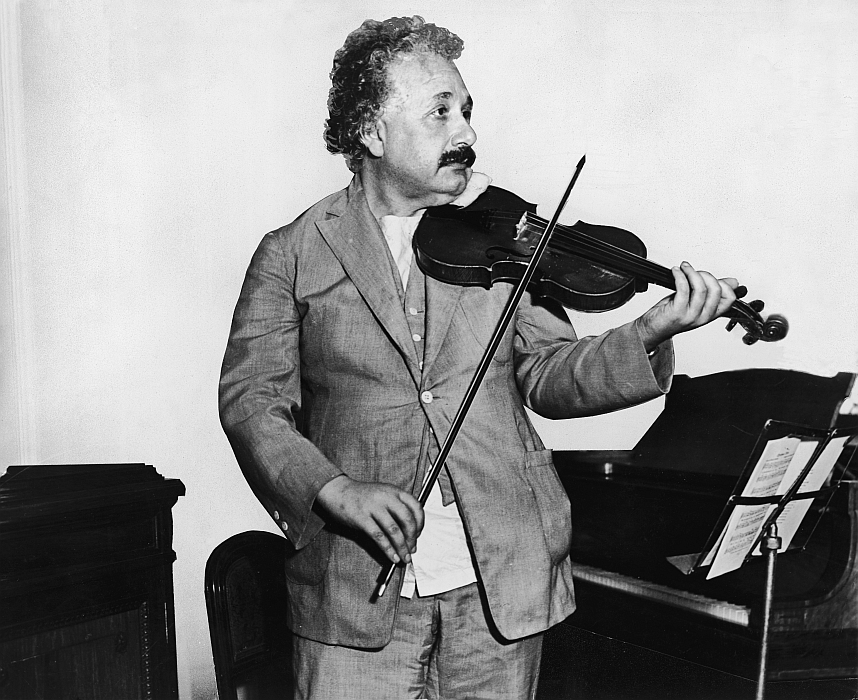How Einstein’s Brain Is Different and Similar to Yours
By any and all measures, Einstein was a genius. But what made him so different from any other person? Turns out his brain was wired in a very different way! Takes a look inside to show you the ways in which Einstein’s brain was both different and similar to yours.
Even at the age of nine Einstein spoke hesitantly, and his parents feared that he was below average intelligence. Did he have a learning or personality disability (such as “Asperger’s syndrome,” a mild form of autism)? There is not enough historical evidence to say. Albert was a thoughtful and somewhat shy child, but within the normal range of personality. If he had difficulties in school it may have been less a peculiarity of his brain than resistance to the authoritarian German teachers, perhaps compounded by the awkward situation of a Jewish boy in a Catholic school.
Although he got generally good grades (and was outstanding in mathematics), Einstein hated the academic high school he was sent to in Munich, where success depended on memorization and obedience to arbitrary authority. His real studies were done at home with books on mathematics, physics, and philosophy. A teacher suggested Einstein leave school, since his very presence destroyed the other students’ respect for the teacher. The fifteen-year-old boy did quit school in mid-term to join his parents, who had moved to Italy.
From a classroom essay Einstein wrote in French at the age of 16, explaining why he would like to study theoretical mathematics or physics: “Above all it is my individual disposition for abstract and mathematical thought, my lack of imagination and practical talent. My inclinations have also led me to this resolve. That is quite natural; one always likes to do things for which one has talent. And then there is a certain independence in the scientific profession which greatly pleases me.”
The secret of genius of the most talented 20th century physicist Albert Einstein is in the unique structure of his brain. This conclusion was made by American scientists after years of research.
They conducted a comparative analysis of the brain scientist and 85 ordinary people.
The prefrontal, as well as parietal and temporal parts of Einstein’s head had a somewhat unusual structure, although the asymmetric shape and dimensions of the brain were within the normal range.
“It is this circumstance that explains Albert Einstein’s unique visual-spatial and mathematical abilities,” says Dan Falk, one of the scientists who participated in the study.

In his lifetime many wondered if there was anything especially different in Einstein’s. He insisted that on his death his brain be made available for research. When Einstein died in 1955, pathologist Thomas Harvey quickly preserved the brain and made samples and sections. He reported that he could see nothing unusual. The variations were within the range of normal human variations. (As it happened, the brain was a bit smaller than average; size is not correlated with intelligence.) There the matter rested until 1999. Inspecting samples that Harvey had carefully preserved, Sandra F. Witelson and colleagues discovered that Einstein’s brain lacked a particular small wrinkle (the parietal operculum) that most people have. Perhaps in compensation, other regions on each side were a bit enlarged; later they were found to have other unusual features. These regions, the inferior parietal lobes, are known to have something to do with visual imagery and mathematical thinking. Thus Einstein was apparently better equipped than most people for a certain type of thinking. Yet others of his day were probably at least as well equipped, for example, Henri Poincar and David Hilbert were formidable visual and mathematical thinkers, both were on the trail of relativity, yet Einstein got far ahead of them. What he did with his brain depended on the nurturing of family and friends, a solid German and Swiss education, and his own bold personality.
Einstein died in 1955 at the age of 76 from an aortic aneurysm. The brain of an outstanding scientist was kept by the pathologist Thomas Harvey, who performed the autopsy. This fact caused discontent of family and friends physics. It was Harvey who sent Einstein’s brain to American specialists for research.
The brain of Albert Einstein was cut into 240 parts. One of them came to Dr. Roark-Adams, who decided to sell it to the Museum of Medicine Mutter.
Some parts of the scientist’s brain were exhibited in the well-known British gallery owned by the Welcome Foundation (the fund specializes in financing the latest research in medicine).
